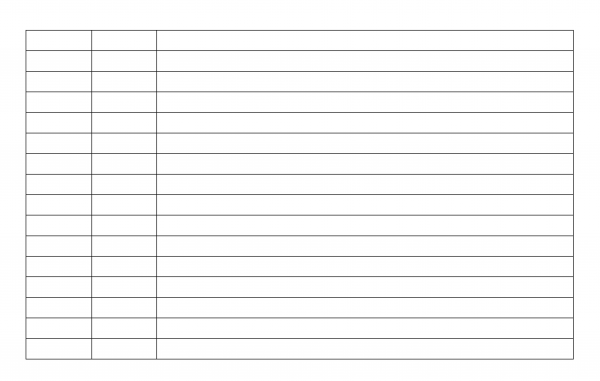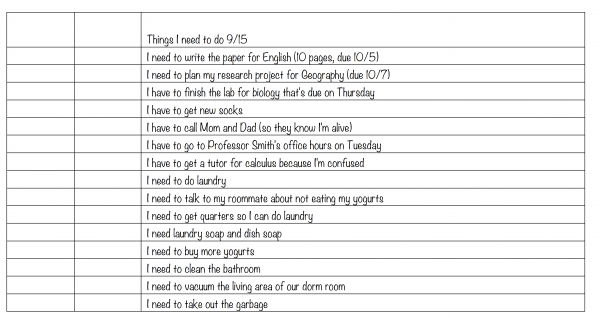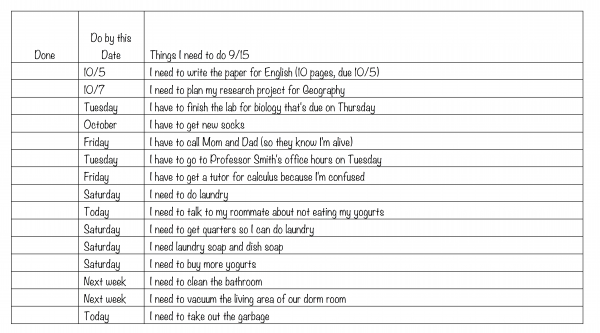How many times have you pinned your hopes to a planning system, only to have it fail? How many old (and new) planners are gathering dust in your room, on your desk, or in the back of your closet?

“I’m not sure when I got this one. I think my aunt gave it to me in 1992.”
Most of us have at least one planner that we bought with the best of intentions, hoping it would be the solution to all the disorganization and procrastination. Many students (and others) get a planner in the first week of school or the first week of the year, fully intending to use it to schedule their lives to the last minute.

“I bought it because everyone has a bullet journal these days. And I liked the color.”
A new planner fills most of us with hope and the belief that this time, this time, it will work. This time, we will use the planner and be the organized envy of all our friends. This time, we will use the planner and never miss a date or a deadline again.

“That one’s from my first year in college. I think I opened it once or twice.”
Of course, most of these planners wind up stuffed into a backpack or bag, left on a desk at home, or forgotten somewhere, gathering dust.
There’s a reason for that.
A planner is the second step in getting your time together, not your first. Before you ever open your planner, you need a list of what goes into it.
A To-Do List: The First Step
Without a planner, most of us are stuck trying to store what we need to do entirely in our heads. We assume that we’ll remember it if it’s important enough (but we might not) and that writing it down is a waste of time (it isn’t). Research, however, has shown that people who store things like appointments, exam dates, and phone calls home outside of their heads have more working space to think, reason, and complete those tasks.
How do you move it all from your head to someplace you can manage it?
Enter the humble to-do list.
Many of my students give me a look of disbelief when I suggest they make a to-do list. It just sounds too simple and too basic to be the right solution for their problems – stress, anxiety, or not having enough time to get things done.
In our digital world, the idea of making a to-do list seems a bit outdated. Sure, there are apps for to-do lists, but most of them make their lists more complicated than they need to be, with bells and whistles galore to distract you from the fact that you’re making a list of… well, things you have to do.
There are ways to misuse to-do lists, of course. If you keep adding to the list, but you never complete anything on it, then the list can’t help you. If you make a separate list for each area of your life, it’s going to get hard to keep track of.
But when you use them correctly, to-do lists accomplish one thing, pretty much, and they accomplish it really well: They force you to look at the things you need to do, instead of just thinking about them.
Make Everything Visible
Many students think that they will remember what they need to do, but they don’t. What they need to do isn’t obvious to them, because they aren’t seeing it in front of them. Not only that, it’s jumbled up in their head with the ten, fifteen, or fifty other things they have to get done in the next few weeks, so it’s getting drowned out. The mind of a person without a to-do list is like a shaken beehive full of angry bees – there are too many thoughts, and they are zipping past too fast for you to look at, and they’re so loud with all the buzzing that you can’t think straight – or at all.
A to-do list takes care of these problems. It puts what you have to do where you can look at it, and it gets it out of your head, so that you can free up that space for thinking, planning, and other activities that help you a lot more than trying to hold your schedule in your head ever can.
Don’t just make a to-do list, but start with one. They are the scratch paper you will use to identify everything that needs to go into your planner, on your wall calendar, and into your phone alarms. It’s easier to put things in a planner if you have a list of everything that has to go into it – you’re less likely to make a mess of the planner, and you’re more likely to identify some things that might be bugging you, but don’t even need to go into your planner at all.
Let’s talk about the to-do list that will make your life easier, shall we?
Setting It Up
Take out a piece of notebook paper and divide it into three columns – two narrow ones, maybe an inch wide each, on the left, and a big one that takes up about two-thirds of the page to the right. In the big area, write down the things that are zipping around in your head like angry, buzzing bees – all those things you need to do. You don’t need to put this in any kind of order yet; just get them out of your head.

Put the date at the top of the wide column on the right. This is the first column you’re going to use. Then write down every thought that’s running through your head. Keep it to one thought per line. Here’s an example:
Now, notice that not all of this is school stuff. But it’s what’s been bugging you, right? And now that it’s out of your head, you can start to deal with it. Write down everything that’s bugging you. It might take a page or two pages, but get that stuff out of your head!
Once it’s out on the page, go through the list and mark down when these things need to get done by. This is the first step to getting them into a system that will help you get things done.

Notice that you have a better handle on when things need to get done. Some of these can be combined – for example, getting quarters, getting soap, and buying food can be a grocery trip scheduled for Saturday. Calling Mom and Dad on Friday might coincide with asking for their help in paying for the calculus tutor that you’ve already researched and contacted earlier the same day.
With this list, you can now break down the big projects into manageable steps. This is the second step in the four-part process of getting your tasks out of your head and onto the page. We’ll cover that in the next blog post in this series.
In the meantime, I’d like to hear from you! Comment here, or send me an email, and tell me about your experiences using planners and to-do lists!

